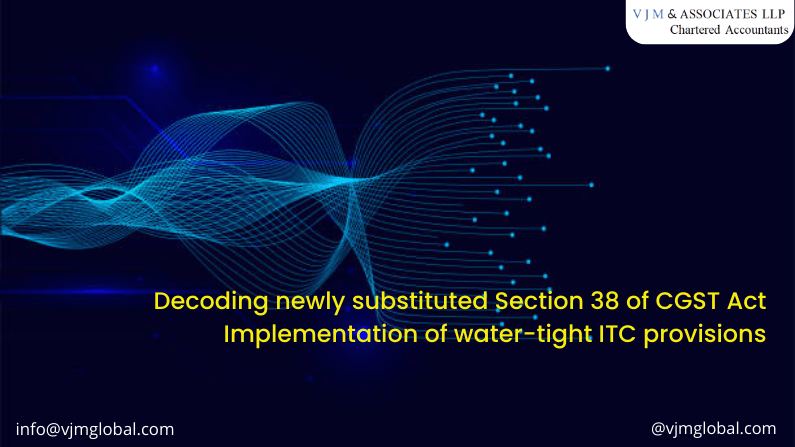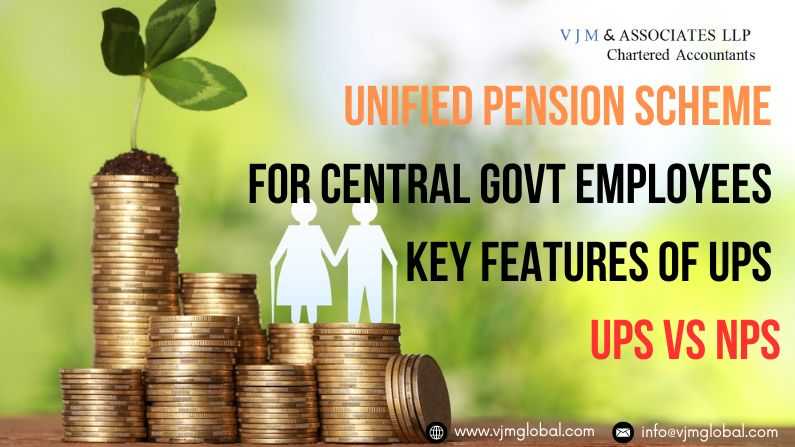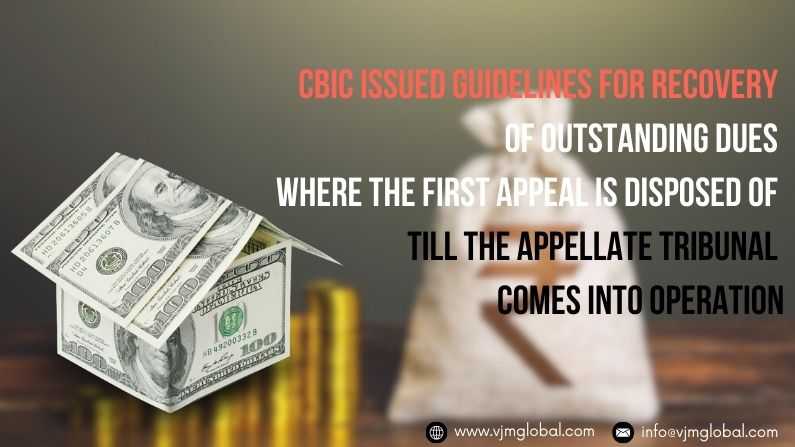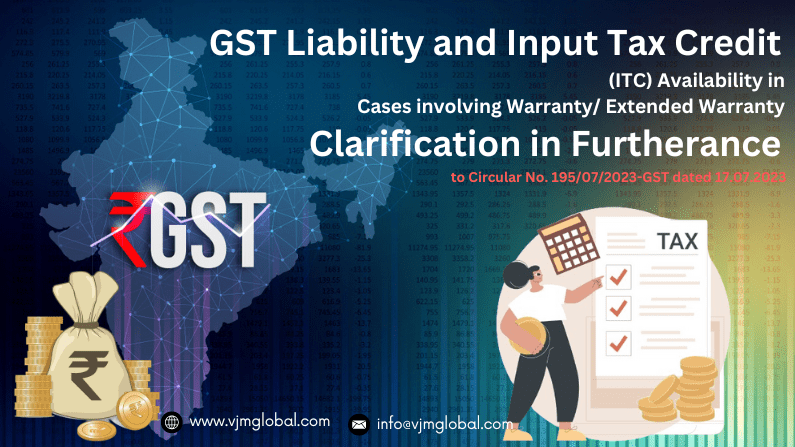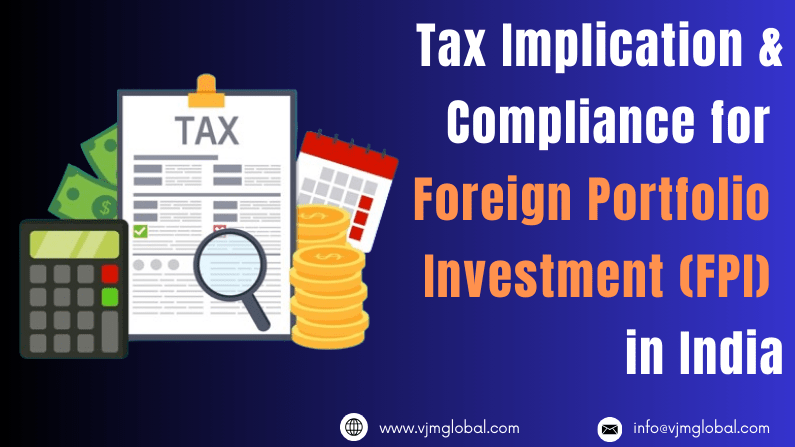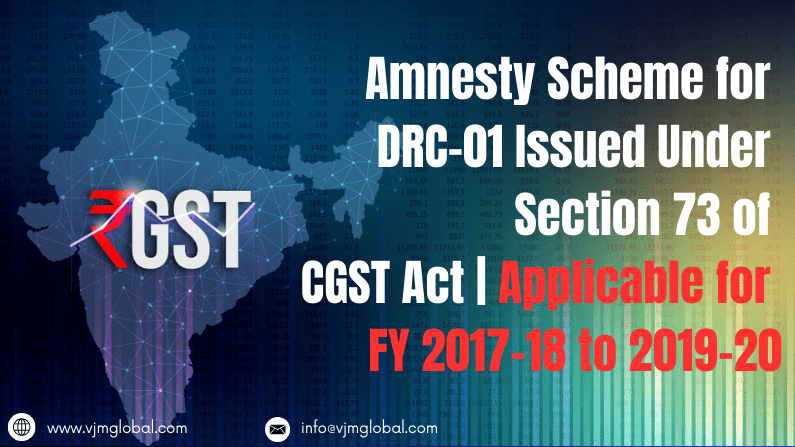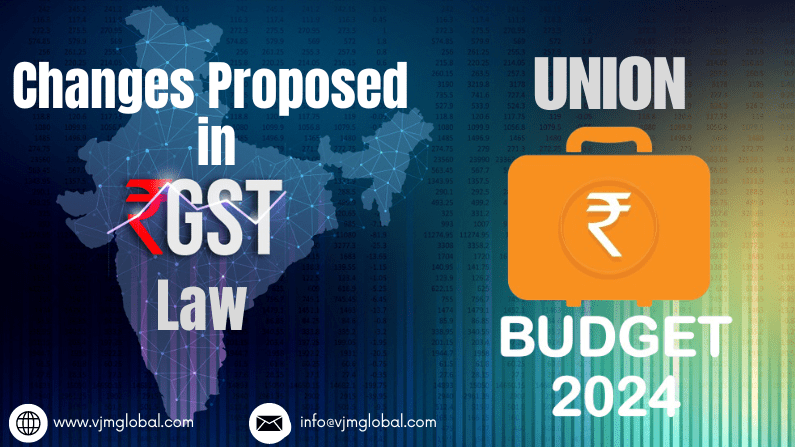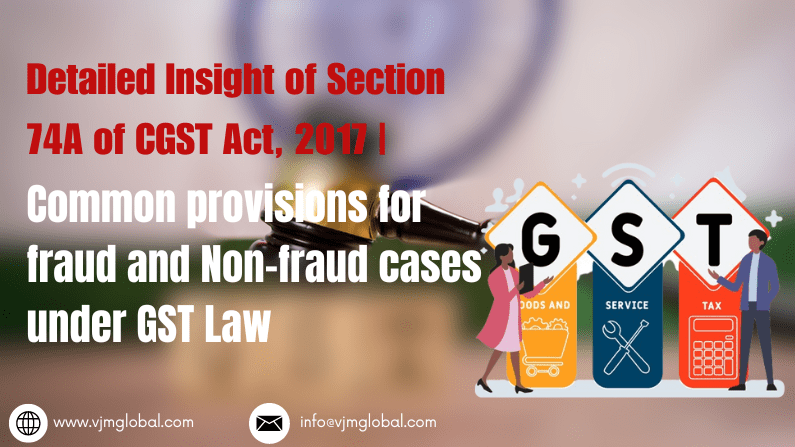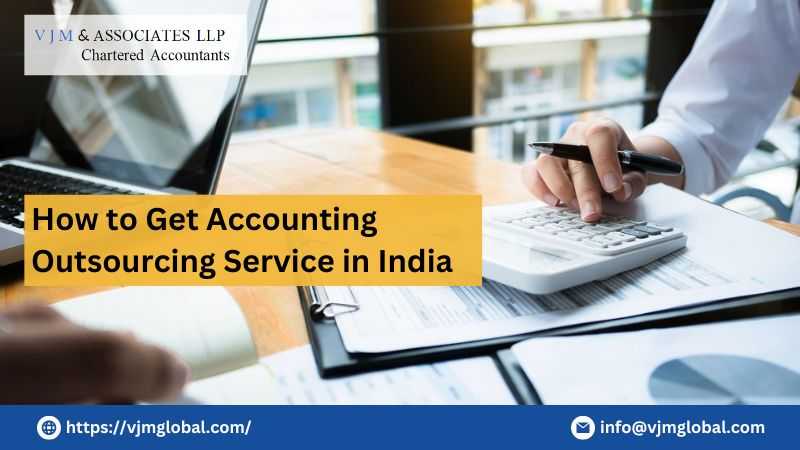Under goods and service tax, the seamless flow of Input Tax credit was a major attribute and it was ensured that double taxation is completely avoided through passing ITC. However, with the introduction of GST, this favorable weapon has been used unfairly by taxpayers extensively by taking fake ITC. Industries are highly involved into taking fake invoices, i.e., supplies without actual movement of goods or services, and try to reduce their output tax liability. Department encounters frauds involving crores of tax amounts through this fake ITC system on a daily basis.
Therefore, the department is taking every possible step to ensure that taxpayers avail only genuine credits. Section 38 of the CGST Act contains provisions related to furnishing details of inward supplies wherein an earlier proposed model of GST was provided, i.e., the recipient can take action of add/delete/modify on invoices entered by the supplier in his outward supply return (i.e., GSTR-1).
However, since this model of GST was never implemented, therefore, section 38 has been amended through Section 104 of the Finance Act, 2022 according to the present model of GST to provide eligible and ineligible ITC.
In this article, we have put a sincere effort to explain the implications of the new Section 38 of the CGST Act:
1. Existing Section 38-“Furnishing details of inward supplies”
- Existing Section 38 of the CGST Act functions as per the GST model that was initially planned to implement.
- As per the existing provision of Section 38, every registered person shall verify, validate, modify or delete the details of outward supply communicated to him through outward supply return (i.e., GSTR-1).
- Basically, it talks about two-way communication. Understanding according to the current GST model, taxpayers shall take action on each and every invoice appearing in their GSTR-2A and 2B by accepting or modifying or deleting such invoice and such action of the recipient shall be communicated to the supplier for suitable action.
- However, this model was implemented, therefore, provisions of Section 38 become completely redundant.
- Through Section 104 of the Finance Act, 2022, the department has completely substituted the provisions of Section 38.
2. Proposed Section 38- Communication of details of inward supplies and input tax credit.
- Sub-section (1) of Section 38 provides that information filed by the supplier in his outward supply return shall be made available to the recipient through an auto-generated statement, i.e., GSTR-2A and GSTR-2B. Therefore, the amendment provided under Sub-section (1) is already implemented on the GST portal.
- Such auto-generated ITC statement shall bifurcate the ITC into the following 2 parts:
- ITC which is available to the recipient, i.e., eligible ITC
- ITC which is restricted to the recipient due to any one of the following conditions, i.e., ineligible ITC:
- GSTR-1 filed by a newly registered entity
- Statement of outward supply, i.e., GSTR-1 is filed by a registered person within the prescribed time of taking registration.
- Through this clause, the department is targeting those business entities which are newly formed and making crores of turnover from the very first month by entering into fake invoice transactions.
- However, which class of registered person shall be covered under this restriction and for how much of the time from the date of obtaining registration is yet to be clarified by the department.
- GSTR-1 filed by a person who has defaulted in payment of GST:
- This is a general practice followed by bogus registered persons. They pass the ITC of fake invoices to the recipient by entering invoice details in GSTR-1.
- However, they do not file their GSTR-3B and default in payment of GST.
- Now, supplies from such suppliers will appear as ineligible in the inward supplies report of the recipient, i.e., GSTR-2A and GSTR-2B.
- However, ITC shall be ineligible when such default continues for the prescribed period of time.
- Output Tax payable in GSTR-1 exceeds actual payment of GST
- In cases where GST output liability as per GSTR-1 exceeds GST liability actually paid by supplier in GSTR-3B, the system will mark the supplies from such suppliers as ineligible.
- Output tax payable must exceed the output tax paid by such limit as may be prescribed.
- However, this clause can cause hardship to genuine mistakes of suppliers. If the supplier inadvertently filed GSTR-1 with an excess amount and he filed GSTR-3B with the correct amount and paid GST according to GSTR-3B. This difference in GSTR-1 and GSTR-3B will disallow the ITC of all of his recipients.
- The limit of difference is yet to be prescribed by the supplier.
- ITC availed in excess of eligible ITC appearing in GSTR-2A/2B
- Supplies from suppliers, who have availed excess ITC while filing GSTR-3B as compared to eligible ITC appearing in GSTR-2A/2B, will be marked as ineligible.
- While filing Table-4 of GSTR-3B, the ITC table auto-populates eligible ITC as per GSTR-2B. However, in some cases, suppliers take excess ITC as compared to what is auto-populating and the tab starts appearing red.
- Now, ITC from such suppliers will be marked as ineligible. However, limits of difference are yet to be prescribed.
- Registered persons defaulted Section 49(12) of the CGST Act
- Sub-section (12) of Section 49 of the CGST Act is a newly inserted sub-section that provides that the government may specify such a maximum portion of output tax liability that may be discharged through electronic credit ledger by a registered person or class of registered persons.
- Therefore, output tax liability, beyond the maximum specified limit is required to be paid in cash.
- However, if any supplier defaults in discharging output tax liability in accordance with Section 49(12), then ITC from such supplier shall be marked as ineligible.
- Corresponding Conditions and restrictions shall be prescribed
- Any other class of persons as may be prescribed.
- Therefore, new section 38 has water-tight ITC provisions so that no bogus or fake ITC is taken by any registered person.
- Also, in each and every ground of disallowance, the word “prescribed” has been used. That means the actual time limit or actual difference limit or actual class of persons has not yet been specified in the law as on date. The government has the power to specify or change these limits.
3. Example of ITC availment under existing vs new Section 38
3.1 ITC in the existing scenario
- Under existing GSTR-2B or GSTR-2A, a separate column is provided that shows whether ITC is eligible or not and ineligible ITC automatically lapses while filing GSTR-3B.
- However, presently, ITC is marked as ineligible due to different reasons such as:
- The supplier is present in another state and he has marked his supplies as intra-state sales.
E.g. Employee of A limited has obtained accommodation service in another state while on a business trip. Now, while raising the invoice and filing GSTR-1, the hotel filed such a supply as an intra-state supply and charged CGST & SGST on the same. Therefore, such ITC shall appear in GSTR-2A and GSTR-2B of A limited but is marked as ineligible ITC.
- The supplier has filed GSTR-1 or amended details in GSTR-1 after the due date.
| ITC appearing in Books | 1,00,000 |
| ITC appearing in GSTR-2B | 90,000 |
| Eligible ITC | 85,000 |
| Ineligible ITC (Difference Place of Supply, GST return filed after the due date, etc.) | 5000 |
| ITC to be availed in GSTR-3B | 85,000 |
3.2 ITC under new scenarios
- Now, in the above example, out of the above-mentioned eligible ITC of INR 85,000, the system will further mark ineligible ITC based on compliances made by suppliers.
| ITC appearing in Books | 1,00,000 | |
| ITC appearing in GSTR-2B | 90,000 | |
| Eligible ITC | 60,000 | |
| Ineligible ITC | ||
| The supplier has filed their GSTR-1 but not GSTR-3B | 10000 | |
| Supplier’s ITC in GSTR-3B is greater than eligible ITC as per GSTR-2B | 15,000 | |
| Ineligible ITC (Difference Place of Supply, GST return filed after the due date, etc.) | 5000 | |
| ITC to be availed in GSTR-3B | 60,000 |
Therefore, in the new scenario, ITC will drastically drop and taxpayers would require more funds for the payment of taxes.
4. Impact of Section 38 on registered persons
- No doubt, new section 38 will create a lot of chaos for a registered person as a remarkable portion of ITC will get disallowed.
- Further, taxpayers will be required to keep a proper reconciliation of eligible ITC and ITC recorded in books to make sure only eligible ITC is claimed.
- Taxpayers will need to ensure that they deal only with compliant vendors. A compliant supplier translates to higher ITC claims.

